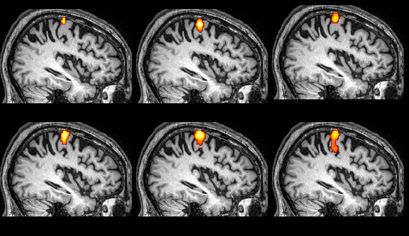Robotic therapy expands recovery window for stroke patients
With the help of new robotic training, victims of stroke may be able to extend the narrow six-month window to regain their mobility, according to a recent study presented at the RSNA conference Wednesday.
With the help of new robotic training, victims of stroke may be able to extend the narrow six-month window to regain their mobility, according to a recent study presented at the RSNA conference Wednesday.
Between 80% and 90% of stroke survivors experience motion problems, according Dr. A. Aria Tzika, director of the NMR Surgical Laboratory at Massachusetts General Hospital. Almost two-thirds of stroke survivors can't use the affected hand in their everyday activities after six months.
"We believed that the critical period is the first three to six months after stroke during which restructuring or neuroplasticity can take place," said Tzika. "Now we see that actually the brain is adaptable to rehabilitation."
Tzika and a team of researchers examined five patients who had strokes affecting right-hand use at least six months prior to the study.
Tzika and her colleagues first used a dynamometer to calculate each patient's total hand strength. Then they gave them plastic balls stiff enough to engage about 75% of their full strength. Participants went through an in-home training session that involved squeezing the ball for one hour a day, three days a week.
Patients came in for testing four times throughout the study: before, during, and immediately after the training, and one month after training ended to see if the effects lasted.
During testing, the patients gripped a robotic device called an MR_CHIROD that researchers could control to employ 45% or 60% of the subjects' full strength.
Tzika said they opted for the more complex machinery instead of simple plastic balls for testing because it offered researchers more precise control over the patients' movement.
"This device is set to a particular setting so we can control their training," she said.
As patients gripped the device, an fMRI scan monitored their brain activity.
The researchers discovered that brain activity in the area that controlled hand use went up and stayed up, even after patients had stopped training for four weeks.
Tzika said the success with motor skills offers the possibility that appropriate tasks could rehabilitate lost verbal or memory skills

Can Abbreviated MRI Have an Impact in Rectal Cancer Staging?
April 4th 2025Abbreviated MRI demonstrated a 95.3 percent specificity for rectal cancer and provided strong agreement with the full MRI protocol for T staging and detection of extramural venous invasion, according to newly published research.
Can Photon-Counting CT be an Alternative to MRI for Assessing Liver Fat Fraction?
March 21st 2025Photon-counting CT fat fraction evaluation offered a maximum sensitivity of 81 percent for detecting steatosis and had a 91 percent ICC agreement with MRI proton density fat fraction assessment, according to new prospective research.